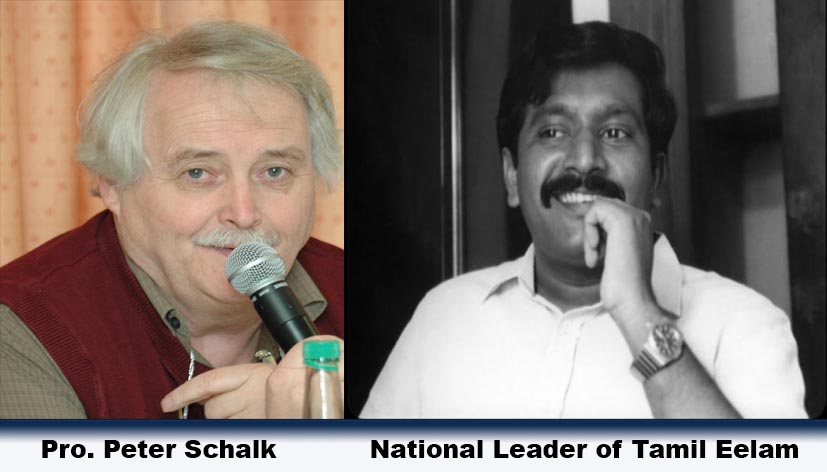

The Tamil Resistance Movement on the Road to Peace

when travelling in Ilankai, I am sooner or later asked by Ilavar and Lankans whether I have met TiruVeluppillai Prabakaran. Evidently, my status is made dependent on having met him. I tell the truth, I have not met him, but I am not desperate. I have got something else, namely a deep friendship with somemembers of the Tamil resistance movement. I have through two decades had the privilege of sharing with these members their happiness and sorrow in their Tamil homeland and in exile.
Annually, at Maveerarnaal, many members of the resistance movement come together to commemorate the young men and women who have decided to die in battle for attaining Tamil Eelam. I knew some of the fighterswho died and I know some of those who may die in the battles to come. I realize that the economic destruction of the Tamil homelands is incalculable. The mostimportant of all Tamil social institutions, the educational system, lies in ruins. The more than 17 000 resistance fighters who died on the battle field gave,however, their lives for establishing peace, not for making war a permanent institution. This is honouredby Tiru Veluppillai Prabakaran.
I wish to highlight some passages of his speech at Great Heroes Day on 27th November 1996. He said that the LTTE is not opposed to peace, nor is it opposed to a resolution to the conflict by peaceful means. The peace talks should be held in a congenial environment free from thepressure of military aggression, he said. He mentioned that the LTTE in 1995 called for international mediation. The LTTE’s position is that political negotiations should be preceded by creating conditions for de-escalation, withdrawal of troops and normalcy, he added. If we look back from 2004, the LTTE has acted accordingly. In areas controlled by the LTTE like the Vanni, the armed forces of the LTTE have withdrawn and a civil society is coming forth. Law and order prevails. The surplus of production is redistributed among the poor.
The international intervention has become true through the facilitation by Norway. The exile Ilattu Tamil community offers its professional competence to develop the Vanni. The LTTE has forwarded a document known as ISGA as a basis for negotiations. In this document, the LTTE does not put the achievement of a separate state on the agenda for negotiations in which case all negotiations are made impossible.
Let me end by referring to a vision by Tiru VeluppillaiPrabakaran verbalised on November 27th 1996 about a future Tamil homeland in peace. He says that he wantsa condition in which the Tamil people can live with freedom and dignity in their own land and without external coercion determining their own political life. He is implicitly demanding the recognition of the right of self-determination of the Iavar, a recognition that certainly will open many doors to peace. The international community has already understood the content of this vision and is backing it against extremist forces in the South. May the peace efforts by Tiru Veluppillai Prabakaran and the Tamil resistance movement be successful!
Pro. Peter Schalk Social Analyst, Professor History of religions, Uppsala University. Sweden.
The Tamil Resistance Movement on